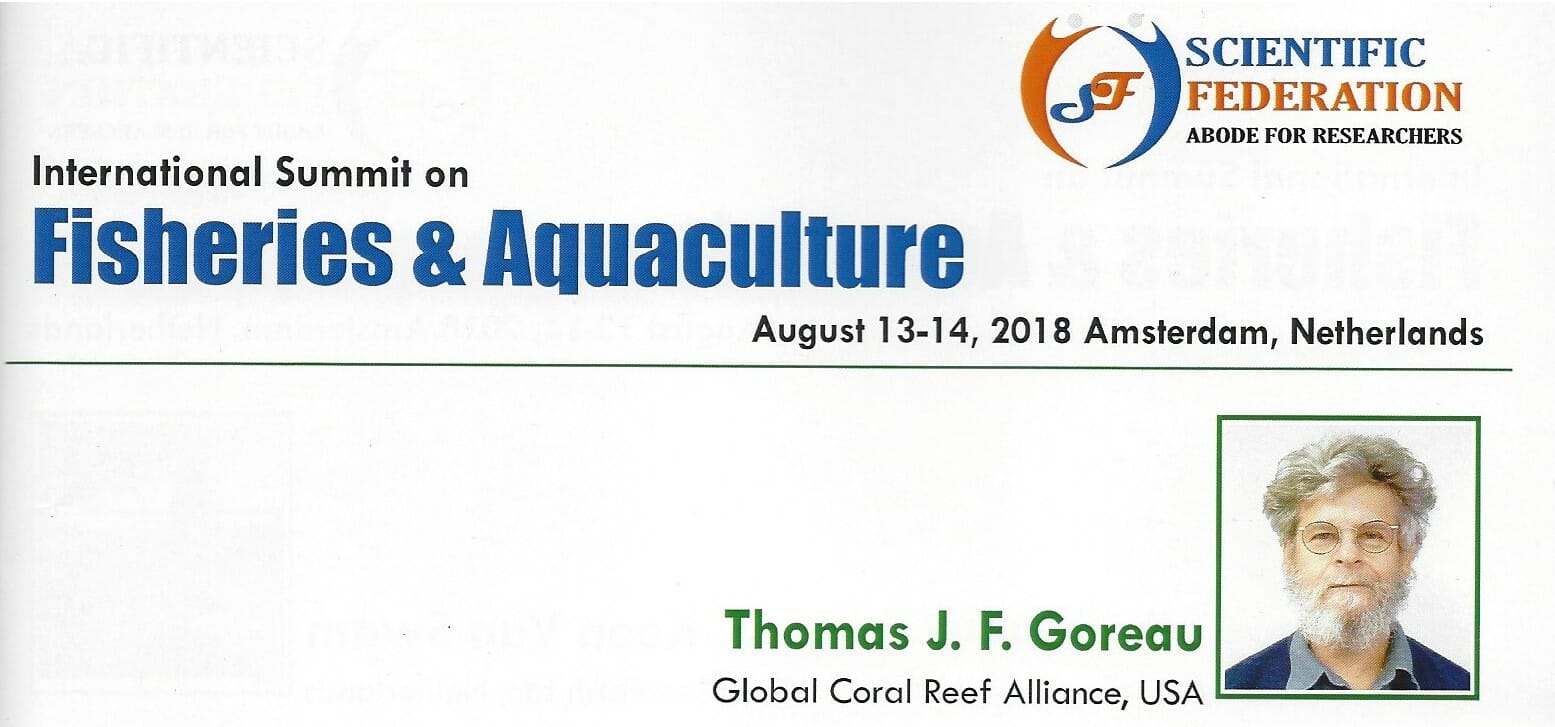2018 International Summit on Fisheries & Aquaculture

Biorock Technology: A Novel Tool for Large-Scale Whole-Ecosystem Sustainable Mariculture using Direct Biophysical Stimulation of Marine Organism’s Biochemical Energy Metabolism
Biorock mariculture technology is a novel application of marine electrolysis, which grows solid limestone reefs of any size or shape in seawater, that get stronger with age and are self-repairing. Biorock reefs can be designed to provide habitat specific to needs of hard and soft corals, sponges, seagrass, fishes, lobsters, oysters, giant clams, sea cucumbers, mussels, and other marine organisms of economic value, or grow back severly eroded beaches at record rates. Biorock reefs, and surronding areas, have greatly increased settlement, growth rate, survival, and resistance to severe environmental stress from high temperatures, sedimentation, and pollution for all marine organisms observed. This allows marine ecosystems to survive otherwise lethal conditions and be regenerated at record rates even in places with no natural recovery. These remarkable findings seem to result from weak electrical fields poising the membrane voltage gradients all forms of life use to generate biochemical energy (ATP and NADP), causing enhanced growth of all species. Biorock technology provides a new paradigm for whole-ecosystem sustainable mariculture that generates its own food supplies, the antithesis of conventional mono-species mariculture dependent on external food inputs, whose wastes cause eutrophication that kills off surrounding subsistence fisheries. Potential applications include fish, crustacean, and bivalve mariculture, algae mariculture, pharmaceutical producing species, and floating reefs for pelagic fishes. The power requirements are small and can be provided by solar, wind, ocean current, and wave energy. The techniques are ideally suited for community—managed mariculture, if investment funding were available to subsistence fishing communities.
Biography
Thomas J.F Goreau was educated in Jamaican schools and hold degrees from MIT, Caltech, and Harvard. President and founder of The Global Coral Reef Alliance, he has dived on coral reefs across the Caribbean, Pacific, Indian Ocean, and SouthEast Asia for more than 60 years. He has published more than 150 papers and written and edited books on scientific photography, marine ecosystem restoration, and soil fertility restoration. He is co-inventor of the HotSpot method for predicting coral bleaching from satellite data and of the Biorock method for regenerating marine ecoystems and eroding coastlines.